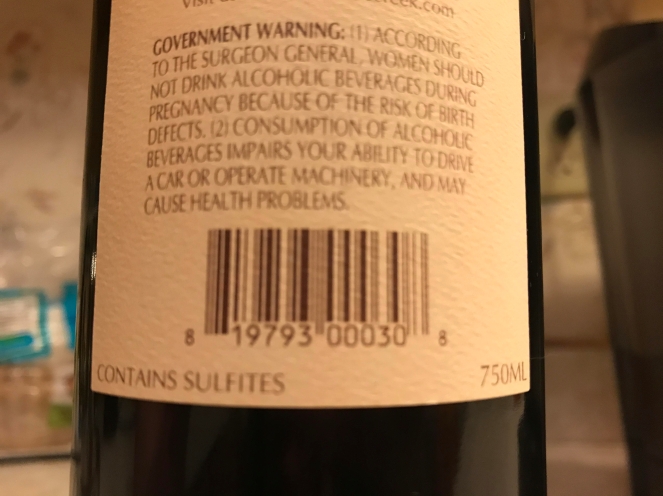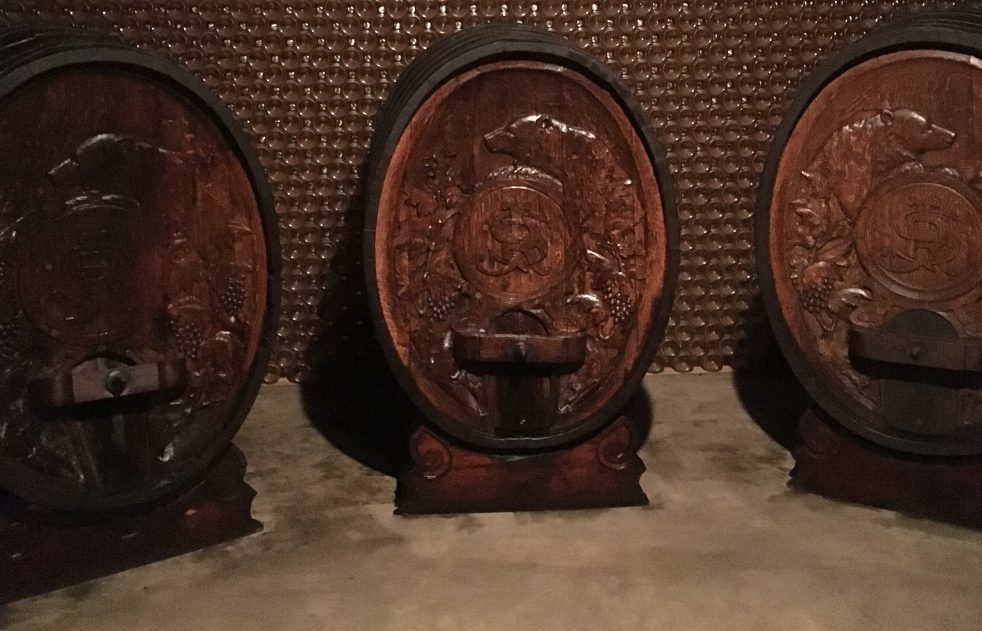Sulfites: much ado about nothing

“Contains Sulfites”. Many of us have noticed this warning on the back label of every wine bottle. Over the years, sulfites have gained a bad reputation. The alleged culprit of wine induced headaches the world over. Right? Wrong!!! Before I flip your world upside down, let me start by explaining what a sulfite is, why it’s in your wine bottle, why its presence in that bottle is legally made known on the back label, and what is actually causing your headaches.
Sulfites, sulfur dioxide, SO2: the terms are interchangeable. For grape growing and wine production, sulfur dioxide is an effective preservative and disinfectant. Let me start by saying that sulfur is actually important to the grape vine’s diet. Most of what a grape vine needs can be obtained naturally from the soil. However, a grape vine may receive additional sulfur from the grape grower. Sulfur is often applied in the vineyard in order to prevent powdery mildew. Powdery mildew is known technically as oidium. It is a fungal disease that has a distinctive white and spider web-like appearance. It’s powdery if you will. Powdery mildew attacks the green parts of a grape vine ultimately affecting grape yield and berry ripening. In other words, it is detrimental in that it reduces crop and grape quality. Sulfur to the rescue. It is important to understand that the application of any and all fungicides in the vineyard (including sulfur) must adhere to regulations. This means there must be sufficient time passed in between applications, and cannot be applied too close to harvest time.
In winemaking, sulfur dioxide is typically applied during the initial crushing and pressing of the grapes following harvest. In this way, sulfur dioxide is effective at preventing the oxidation of the would-be wine. Oxidation is a reaction of the juice/wine being exposed to oxygen. Oxidation causes a browning discoloration of the juice, as well as off aromas and flavors (just like apple slices that are left out in the open). Preventing oxidation is considered to be especially important in the production of white wines, as us consumers generally expect our white wines to be crystal clear and clean looking. As such, many white wines may contain higher levels of sulfites than red wines. Sulfur dioxide also has antimicrobial properties. Its use during winemaking prevents the development of off aromas and flavors caused by spoilage yeasts and bacteria (Brettanomyces is one example).
It is also important to note that sulfites are a natural by-product of the fermentation process. A fermentation alone will produce around 10 parts per million of sulfites. This means that even organic wines will contains sulfites. I want to let you know that there is no such thing as a sulfite-free wine. It is much the same concept of decaffeinated coffee still containing some amount of caffeine. So then why do some labels say “Sulfite-free” or “Contains no added sulfites”? It is legally mandated that any wine containing more than 10 mg/l of sulfites display the “Contains sulfites” warning on the back label. Any wine with 10 mg/l or less of sulfites can get away with calling itself sulfite-free. But now you know the truth.
So then if sulfites are mostly a good thing, why is there a warning on the back label of nearly every bottle? There was a time when the use of SO2 in food products was a bit excessive (think salad bars). For those who suffer from allergies or asthma, a reaction may indeed occur from ingesting sulfites. Symptoms typically include nasal irritation and stuffiness, a tickling of the throat and other respiratory complications. But not headaches. Currently, the legal level allowed in any bottle of wine in the U.S. is 350 mg/l. In reality, most producers use much less than that. That number is simply a legal limit. I can tell you that there are far greater levels of SO2 present in foods like dried fruit and vegetables, canned goods, etc. Remember, it acts as a preservative. So if you are truly allergic or sensitive to sulfites, you’ll need to avoid more than just wine on those grocery store shelves.
Researchers have been hard at work trying to pin down the wine-headache conundrum. We need to remember that grapes (and thus wine) are an agricultural product and that wine inside the bottle is very much alive. There are proteins, pollens, various bacteria, histamines, and tyramines galore inside every bottle (alongside SO2). I’m not sure how sulfites got singled out as the bad guy, and why a box of raisins doesn’t contain the same warning. Nevertheless, it is currently believed that the histamines and tyramines produced by lactic acid bacteria during malolactic fermenation are the true culprit of headaches. The tannins present in red wines may also trigger headaches for some people. Or maybe, just maybe, you drank too damn much! Dehydration will also trigger headaches.
So it is true that sulfites may be bothersome for certain consumers, but ultimately they have been discredited as the causer of wine headaches. So don’t let the “Contains sulfites” warning disconcert you too much. Sulfur is a natural element, and the use of sulfur dioxide has been used for a long, long, LONG time. Sulfites serve an important purpose. For those who would still like to avoid SO2, there are plenty of organic and natural wines on the market that have lower levels. I hope this helps to clear up any misconceptions. Happy drinking. Cheers!
